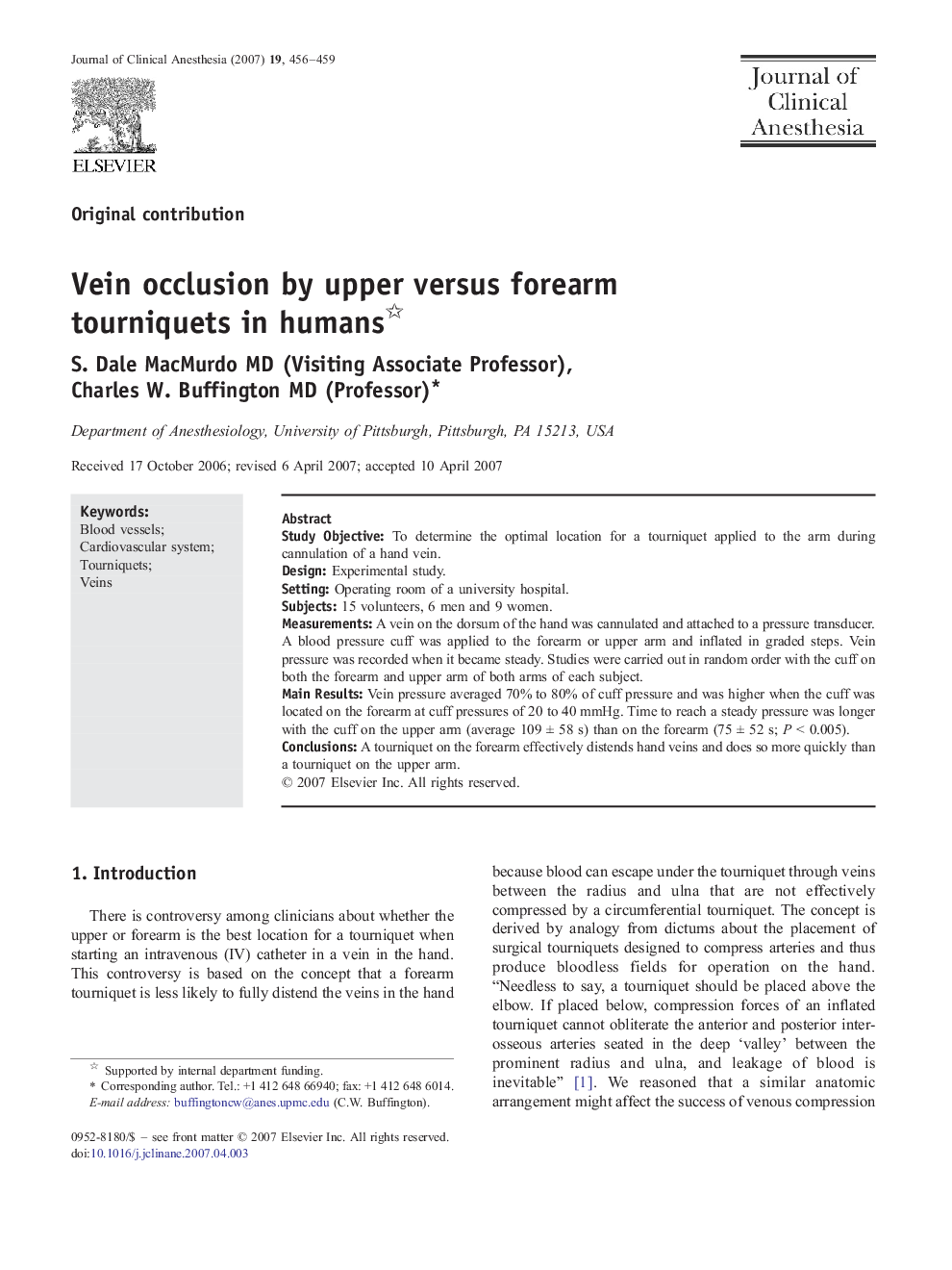| Article ID | Journal | Published Year | Pages | File Type |
|---|---|---|---|---|
| 2763899 | Journal of Clinical Anesthesia | 2007 | 4 Pages |
Study ObjectiveTo determine the optimal location for a tourniquet applied to the arm during cannulation of a hand vein.DesignExperimental study.SettingOperating room of a university hospital.Subjects15 volunteers, 6 men and 9 women.MeasurementsA vein on the dorsum of the hand was cannulated and attached to a pressure transducer. A blood pressure cuff was applied to the forearm or upper arm and inflated in graded steps. Vein pressure was recorded when it became steady. Studies were carried out in random order with the cuff on both the forearm and upper arm of both arms of each subject.Main ResultsVein pressure averaged 70% to 80% of cuff pressure and was higher when the cuff was located on the forearm at cuff pressures of 20 to 40 mmHg. Time to reach a steady pressure was longer with the cuff on the upper arm (average 109 ± 58 s) than on the forearm (75 ± 52 s; P < 0.005).ConclusionsA tourniquet on the forearm effectively distends hand veins and does so more quickly than a tourniquet on the upper arm.
